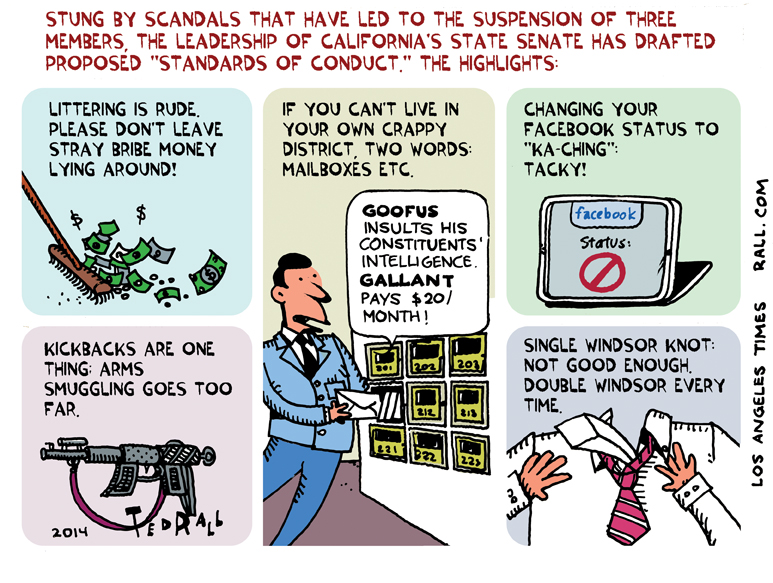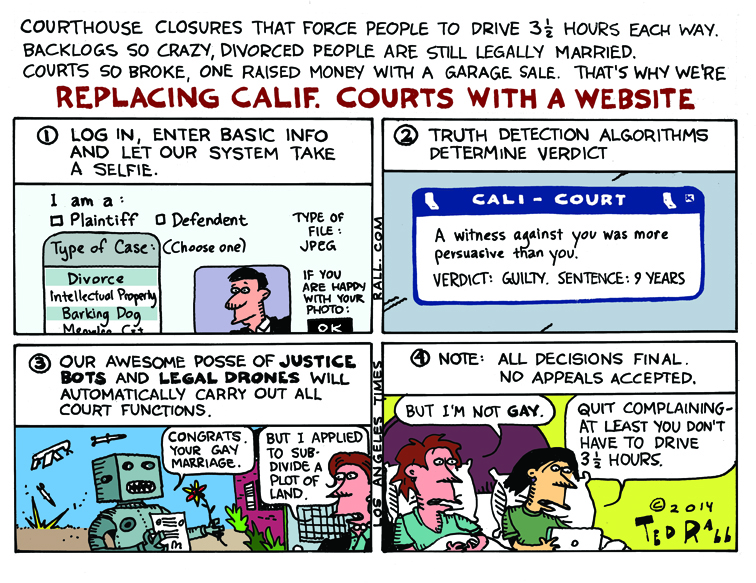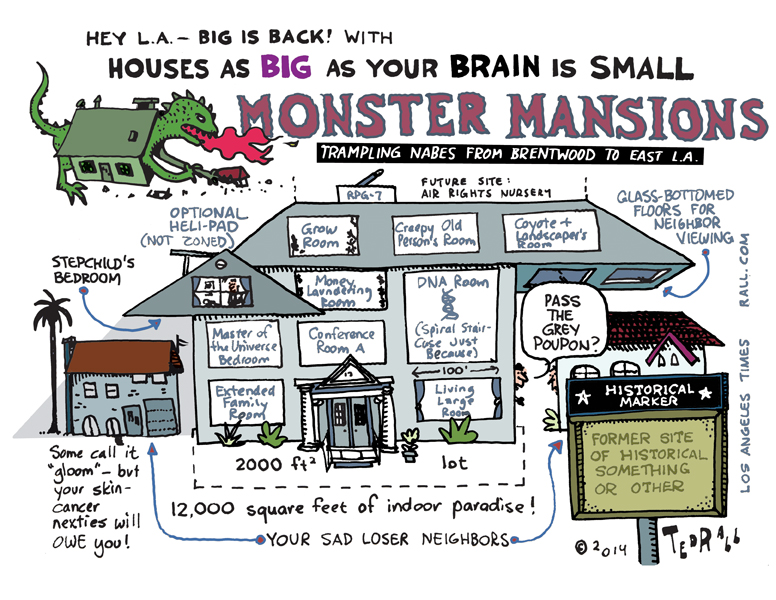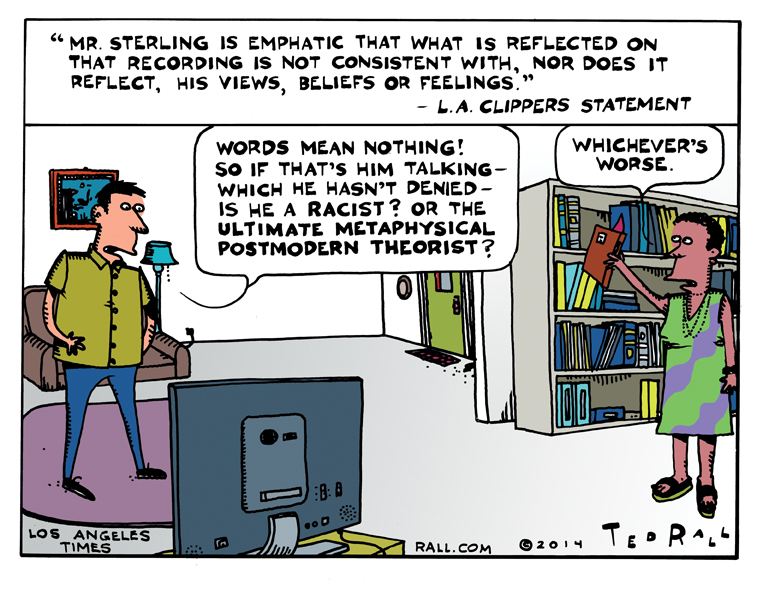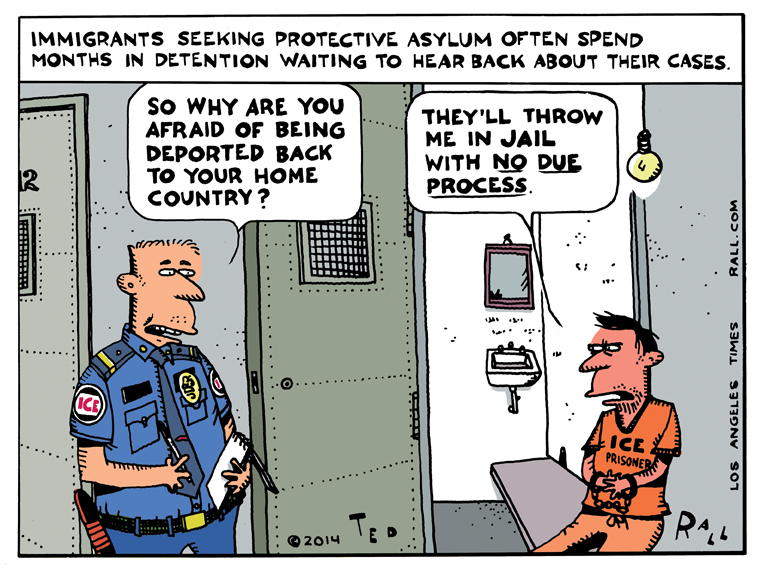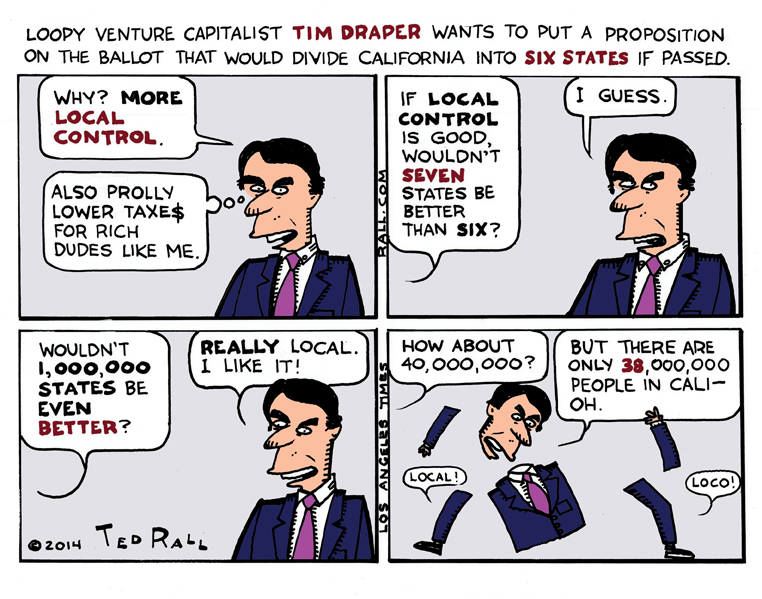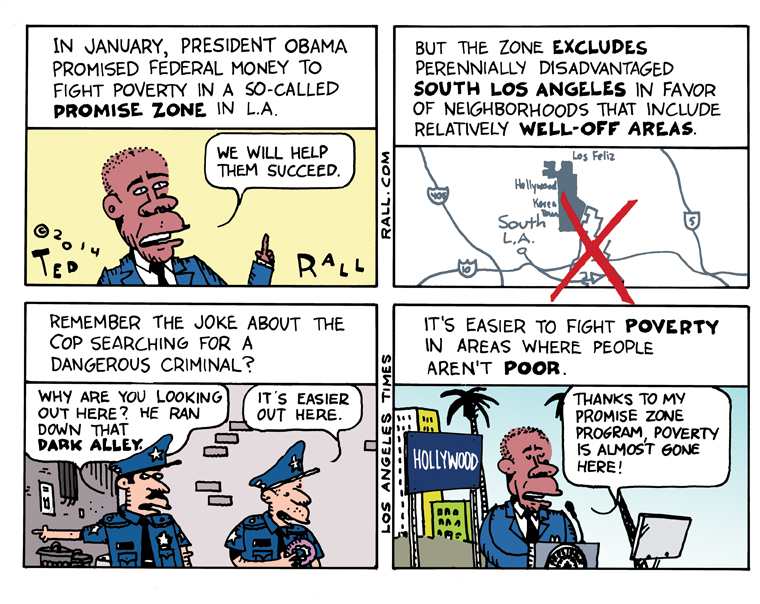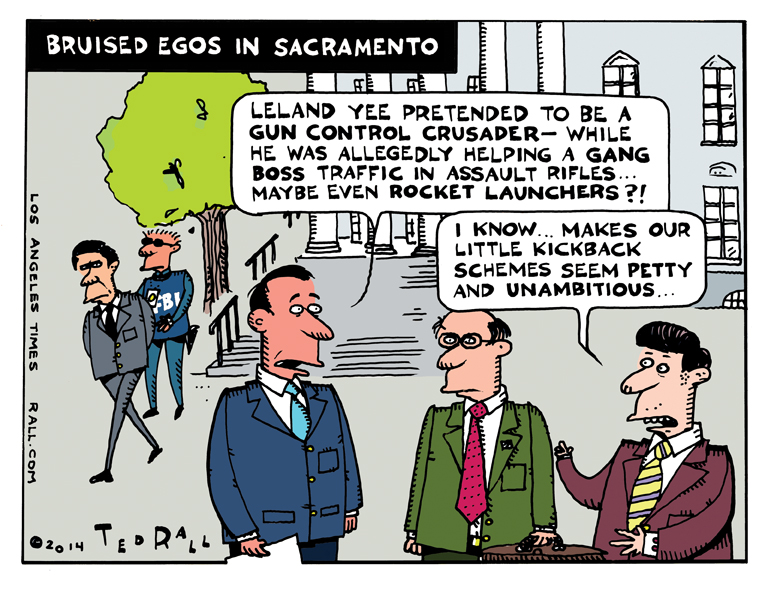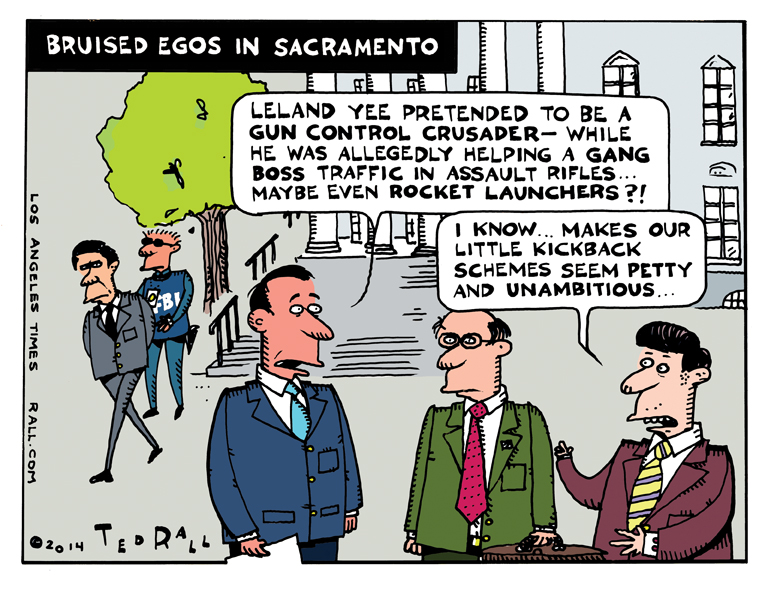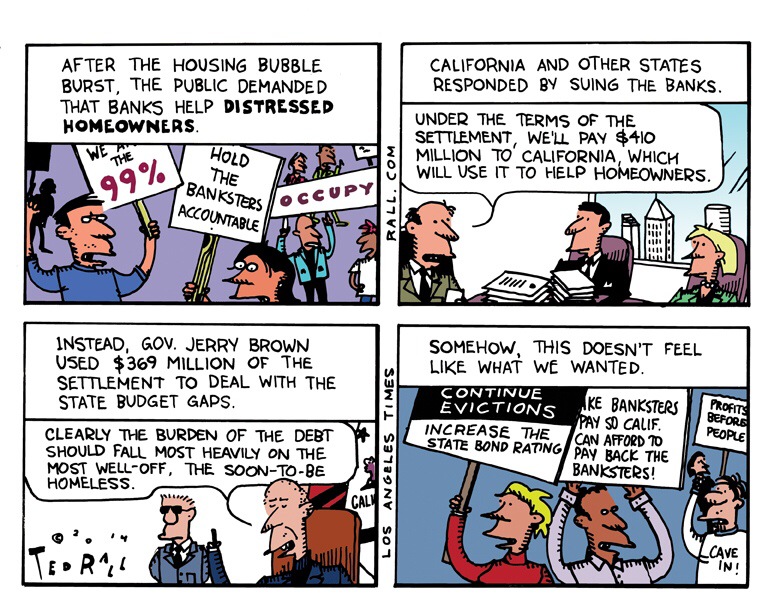The motto of California’s State Senate had might as well be changed to homines qui pravis — men behaving badly.
As Patrick McGreevy reports in The Times, three members are currently under suspension due to scandals.
Roderick Wright of Los Angeles County was convicted of voter fraud and perjury for lying about living in his district. Ronald S. Calderon of Montebello and Leland Yee of San Francisco have been indicted by the feds, accused of influence peddling. Yee, who presented himself as a staunch proponent of gun control, has also been formally accused of offering to connect an undercover FBI agent posing as someone in the market for automatic weapons and RPGs with an international weapons dealer.
Smarting from these blows to their reputation, Senate leaders put their heads together and decided to recruit potential candidates from only the most morally upright, self-sacrificing Californians.
Just kidding.
Actually, they really did come up with a solution: a proposed list of 12 “Standards of Conduct” members would be expected to abide by.
McGreevy calls the standards “fairly common-sense.” Which is true. They’re so common-sense as to prompt the question: why do they need them?
Among the highlights:
- “A Senator or officer or employee of the Senate shall not accept outside employment that is inconsistent with the conscientious performance of his or her duties.”
- “A Senator shall not use the prestige of his or her office, and an officer or employee of the Senate shall not use the status of his or her position, for material or financial gain or private benefit.”
- “Each Senator and each officer or employee of the Senate has an obligation to be informed and prepared, recognizing all sides of an issue.”
- “Each Senator and each officer or employee of the Senate has an obligation to make proper use of public funds.”
Um…duh?
May I suggest Rule 13? “Each Senator shall wear pants, or a skirt, or a pantsuit or other suitable article of clothing as to properly cover his or her private parts when conducting his or her duties in the Senate, with the exception of when nature calls, and then only in a suitable restroom and then with the latch firmly attached so that others may not observe.”
We have finally arrived, it seems, at the stage when it is no longer reasonable to expect behavior that society once considered so standard that it needed neither to be taught nor explained, much less enforced by law. Conflict of interest was always, obviously unethical. Diverting public funds for personal use was always embezzlement, clearly illegal, evidently wrong. Political service was a public trust; while one always had parochial, partisan interests to consider, it was a given that the greater good took ultimate precedence — at least that it should.
You know what would be a better way to improve the ethical standards of state senators than these painfully obvious Standards of Conduct? Subject them to an IQ test. Because if you don’t know this stuff by the time you’re old enough to run for public office, you’re too stupid to serve.

